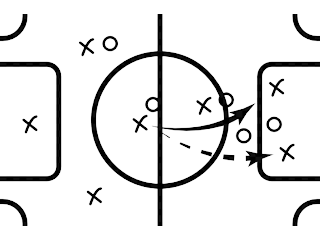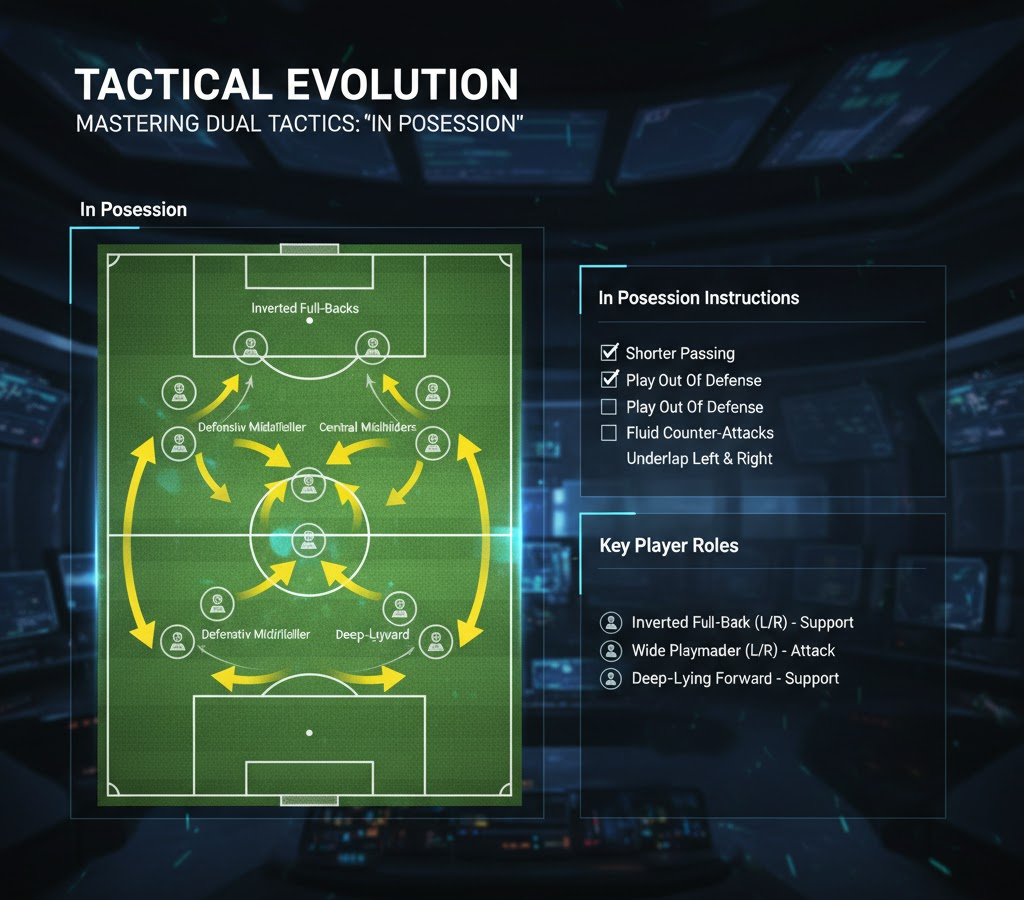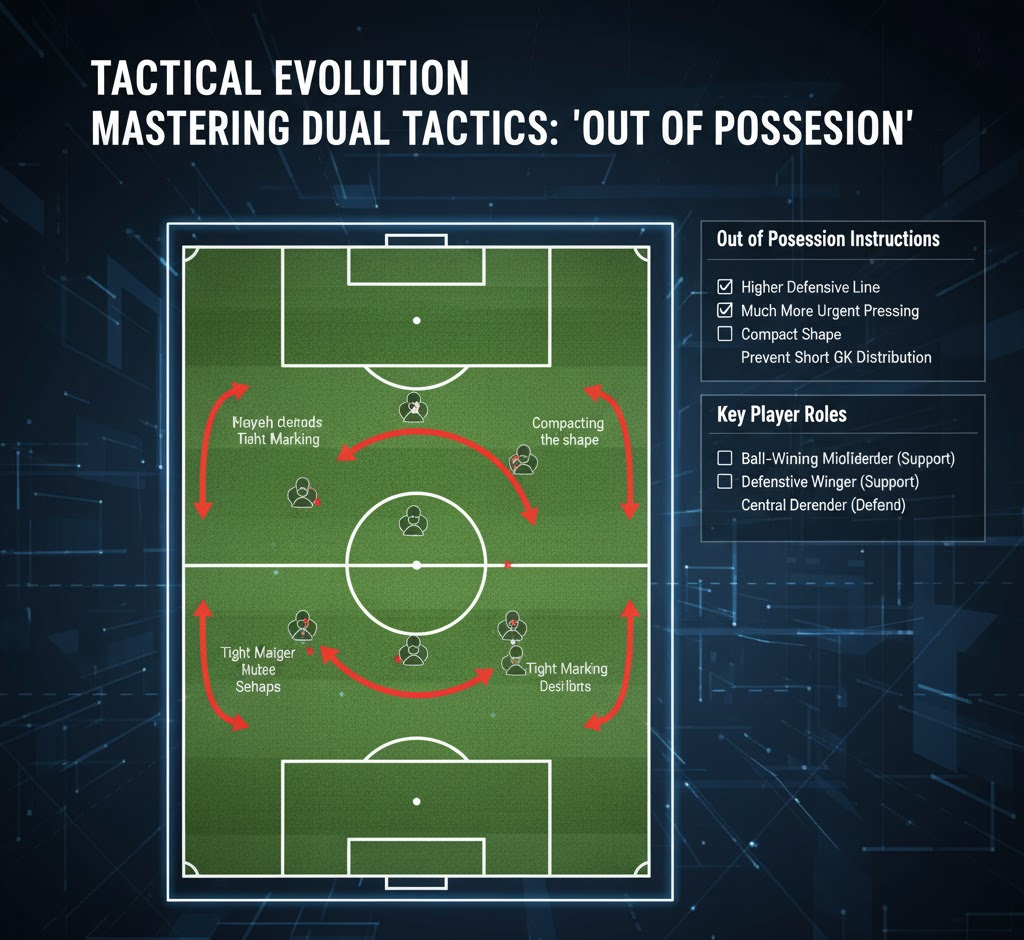 22.10.2025 - Modern sport management simulations demand a sophisticated tactical approach. Successful managers no longer rely on single-system formations; they master the dual nature of the game. This involves creating distinct tactical identities for when your team has the ball and for when they must win it back. Understanding this duality is crucial for competitive success.
22.10.2025 - Modern sport management simulations demand a sophisticated tactical approach. Successful managers no longer rely on single-system formations; they master the dual nature of the game. This involves creating distinct tactical identities for when your team has the ball and for when they must win it back. Understanding this duality is crucial for competitive success.
The game of football, as modeled in management simulations, consists of four fundamental phases: attack, defense, and the two transitions between them. Managers who staticly apply a single 4-3-3 or 4-4-2 formation across all phases fail to compete at the elite level. Elite online managers utilize dual tactics. They recognize that the team’s shape and instructions must fundamentally change depending on possession status. This tactical evolution grants a significant competitive advantage over rivals.
Phase One: Structuring the Attack

The 'In Possession' structure defines how your team converts its starting formation into an attacking shape. This phase is not simply about scoring goals; it is about controlled build-up and creating optimal space. Consider a standard 4-3-3 formation. In possession, this formation should immediately transform to maximize attacking impact.
Managers frequently instruct full-backs to push high, creating attacking width. This movement allows the wingers to move inside, occupying the half-spaces and threatening the opposition goal. Simultaneously, one central midfielder often drops between the center-backs. This action creates a back three, providing numerical superiority in the first phase of build-up. The resulting shape often looks like a 3-2-5 or a 3-4-3.
Specific instructions must govern this structure. Managers should set the attacking width slider to 75-80 percent to stretch the opponent’s defensive line. A high tempo setting, perhaps a value of 65, ensures quick ball movement, preventing the opponent from settling. Encourage specific player roles, such as a Deep-Lying Playmaker in the central defensive role; this player dictates the speed and direction of the attack. Managers who focus only on player roles without defining the resultant team shape miss opportunities.
Phase Two: Defining the Defensive Block

The 'Out of Possession' structure is arguably more critical for consistent success in sport management games. This phase dictates how your team defends space, pressures the ball, and recovers possession efficiently. The attacking 3-2-5 structure must quickly revert to a compact defensive shape.
The initial 4-3-3 often becomes a 4-5-1 defensive block. The wingers drop back to form a five-man midfield line, maintaining narrowness and central compactness. The lone striker occupies the deepest opponent midfielder, preventing easy distribution. This central focus forces opponents wide, into less dangerous areas.
Managers must set the Defensive Line Height strategically. A high line, value of 70, supports an aggressive counter-pressing strategy, aiming to win the ball back within five seconds of losing it. This high intensity requires players with high Stamina and Work Rate attributes; for example, midfielders should possess a Work Rate rating of 15 or higher. Conversely, against opponents with fast strikers, managers should drop the line to a medium height, value of 40, employing a deeper block to eliminate space behind the defense. The defensive block must prioritize spatial coverage over individual marking.
Mastering the Transitions
The transitions—from attack to defense and from defense to attack—determine if your dual tactics function seamlessly. Sport management games often provide specific settings for these moments. Managers must utilize these.
Upon losing possession, a successful dual tactic system either regroups immediately or counter-presses. A Regroup instruction sees players retreat into the organized 4-5-1 shape. This is effective when players are fatigued or numerically disadvantaged. A Counter-Press instruction uses the players' immediate proximity to the ball to win it back quickly, often exploiting the opponent's momentary disorganization. Managers should align the transition instruction with the team's overall physical conditioning. If the squad’s average Physicality attribute is low, opt for Regroup to preserve energy.
Upon winning possession, the instruction often dictates a Counter-Attack or a Hold Shape response. A Counter-Attack setting instructs players to immediately look for forward passes, utilizing the pace of wide attackers. A Hold Shape instruction tells the team to slow the play, retaining possession and initiating the build-up phase carefully. Managers must analyze the opponent’s defensive line. If the opponent commits too many players forward, a Counter-Attack instruction, combined with a quick passing tempo, yields high reward.
Implementation and Personnel Management
Implementing dual tactics requires more than just setting two different formations. It demands versatile players capable of performing different functions. A full-back who pushes forward in attack must have the defensive attributes to recover his position quickly. These players should possess high Anticipation and Positioning ratings, typically 14 or higher.
Managers should utilize the three available Tactical Slots in the game interface. Slot One can be the main attacking setup; Slot Two, the main defensive setup. Using the In-Game instruction menu, managers can switch between these slots based on the match flow, opponent pressure, or player fatigue. This immediate system change ensures the team always operates with optimized instructions. Mastering dual tactics involves continuous monitoring and adaptation, maximizing the statistical advantage in every phase of the game.



